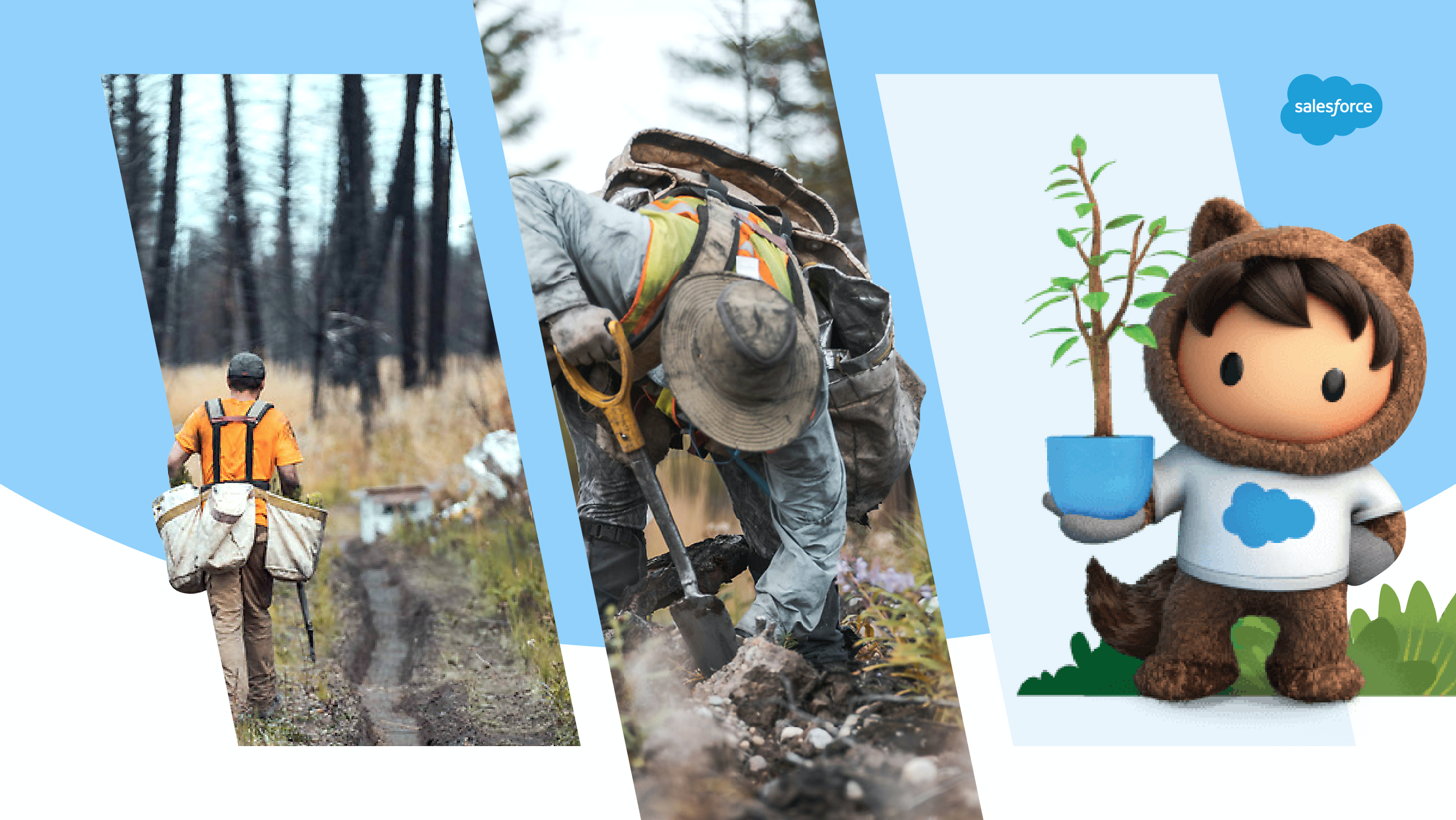When businesses need a simple way to visualize “growth,” a tree is probably one of the first metaphors that spring to mind.
Trees sprout up seemingly out of nowhere, just like a startup. They become tall, the way successful companies become pillars of their industry. Trees also develop branches, similar to firms that branch into new markets or product categories.
But trees are more than a metaphor — they’re essential to life on this planet.
In Canada, we’ve witnessed first-hand the kind of devastation that happens when our trees and forests experience environmental disasters.
Just four years ago, for example, wildfires ripped through the Nazko First Nation Territory in the Fraser Plateau, burning more than 540,000 hectares and becoming one of the worst events of its kind in the history of British Columbia.
The wildfires destroyed homes, killed animals such as moose and deer and brought many businesses to a halt. Reforestation initiatives have been under way but typically require considerable time and resources to be effective.
Inside Salesforce’s Commitment To Sustainability Across Canada And Beyond
Through a partnership with One Tree Planted, Salesforce will help reduce that recovery time by decades, helping to grow and conserve 500,000 native trees on Nazko First Nation Territory. This builds on another recent team effort with One Tree Planted to launch a tree equity and urban reforestation initiative in Malton, Ont.
These kinds of projects are all ways to accelerate 1T.org — a global movement Salesforce founded in partnership with the World Economic Forum, to restore, conserve, and grow one trillion trees by 2030. In Canada, that will include a goal of planting 100 million trees.
The best part is that focusing on sustainability and working to protect the environment is not limited to companies like Salesforce. Thanks to advances in technology, there’s never been a better opportunity to prove that business can be the greatest platform for change.
Here are three steps to discover what you can do to confront one of the world’s most urgent challenges:
1. Measure Your Footprint — And Set Your Goals Accordingly
Given all the day-to-day pressures of running a business, it might seem like getting a handle on the impact you’re having on the planet will be one chore too many. And yet almost every action companies take on a daily basis affects our climate, whether it’s travelling for business, the raw materials we use or how much electricity we consume.
These are all data points that need to be collected, managed and analyzed. In that sense it’s not unlike the challenges businesses used to have with data related to customers before the emergence of the first CRMs.
At Salesforce, we harnessed the same kind of technology that powers our cloud-based businesses applications to better understand the volume of emissions we were generating. We’ve since released that internal tool to the market as Net Zero Cloud, which means any company can now measure their own carbon footprint. One Tree Planted is already using Salesforce technology to plan, implement, and monitor multiple global projects at scale.
Our use of Net Zero Cloud meant we were able to become a Net Zero company this year while also achieving 100% renewable energy for our global operations.
These may sound like ambitious goals, but businesses often have the best practices to tackle them. Think about how you could develop your own climate action plan and where you could drive sustainability. If you need some inspiration, our six priorities include: missions reduction, carbon removal, trillion trees & ecosystem restoration, education & mobilization, innovation, and regulation & policy.
2. Align With Customers’ Values And Lead Through Change
As we saw during COP26, the November 2021 UN climate change conference, governments around the world are exploring what they can do to help protect the Earth’s natural resources for generations to come. Canadians are like anyone else in that they not only expect action from the public sector, but businesses too.
Research conducted by Salesforce Canada earlier this year offers proof of how customers want to see brands align with their values. For example, 34% of Canadians said they’re planning to spend their dollars with sustainable businesses over the next two years. That figure has skyrocketed from only 9% a few years ago.
That means when customers and prospects are researching products and services online, they’ll increasingly be looking for where companies stand on Environmental, Social, and Governance (ESG) issues.
3. Partner With Like-Minded Organizations And Connect With Your Community
Taking action on climate change isn’t something organizations have to tackle on their own. We partnered with One Tree Planted because it has a proven track record in growing more than 40 million trees across 43 countries since 2014. It also conducts long-term monitoring and tree conservation programs to help restore forests and mitigate further risks.
The opportunity to collaborate isn’t limited to the non-profit sector. The work Salesforce and One Tree Planted are doing in Malton, for instance, involves empowering students at four local schools to learn about the historical roots of environmental justice and how trees are a solution for creating equity. They will also plant 720 large trees around the Claireville Dam Restoration Site. Urban forestry will help to gradually reduce the heat island effect of Malton, while also sequestering carbon, improving air quality, absorbing rainwater, and beautifying communities.
Talk to your customers, partners and other people across your company’s ecosystem to find other ways to work collaboratively towards a better future.
We all know there’s progress to be made on building greater sustainability into our everyday lives. Let’s make this the moment businesses take the lead in getting those efforts under way.


